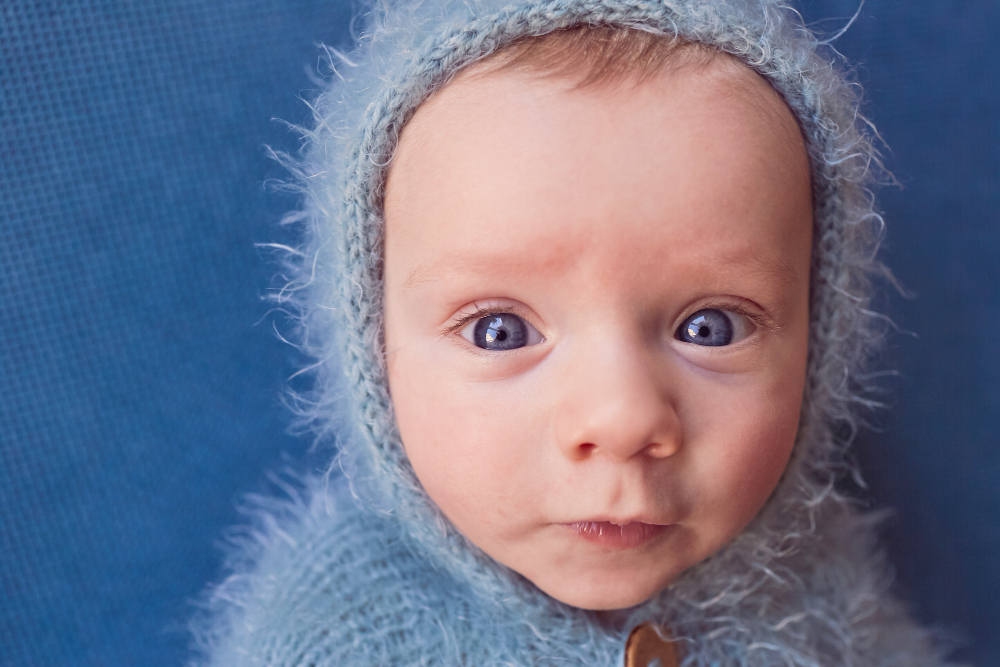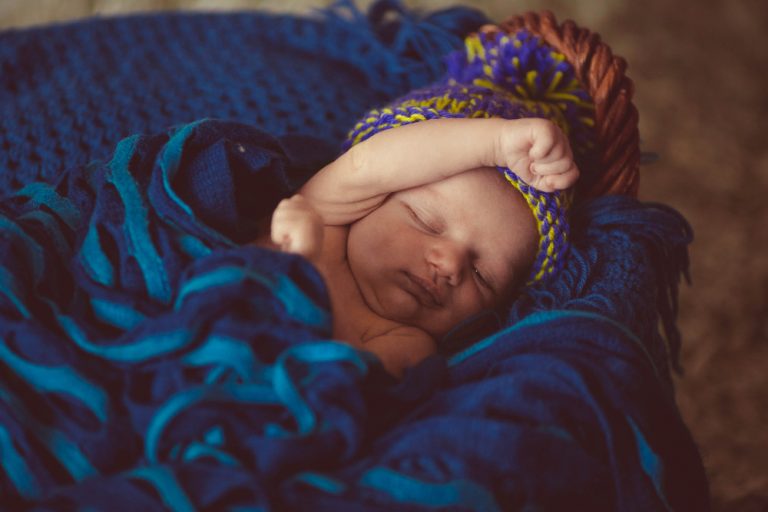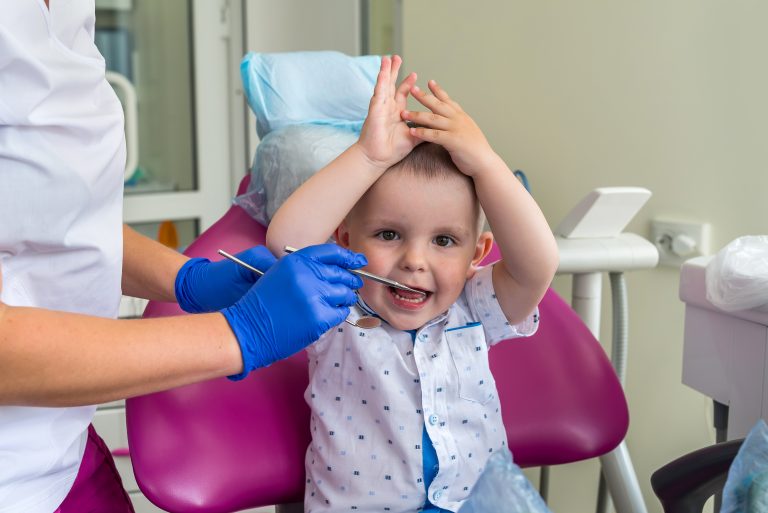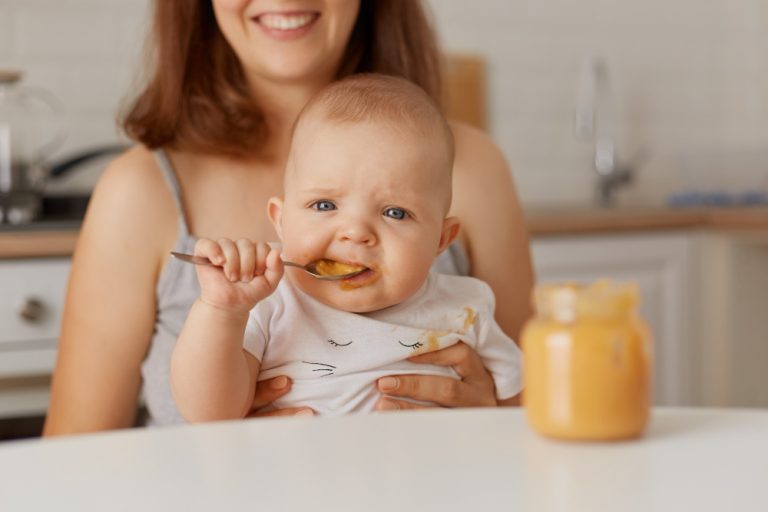When Is The Eye Color Set In An Infant? Baby’s Eye Color
Have you ever wondered when your newborn’s eyes will reveal their final hue, or if those pretty peepers will keep you guessing for a while? Welcoming a little one into the world is filled with marvels and discoveries, one being the gradual transformation of their eye color from that initial newborn shade. As parents eagerly anticipate the moment when is the eye color set in an infant, numerous questions arise about when and how this enchanting change occurs.
Understanding the science behind babies’ eye color development is like unlocking a secret code to decipher the mystery of those little peepers. Factors like genetics and melanin pigment play a vital role in shaping and defining the color of the iris. But when do babies’ eyes change color for the last time? This blog dives into the timeline of eye color evolution during infancy, debunking misconceptions and offering insights into predicting the final eye color based on these early changes.
Stay tuned to uncover the fascinating journey of your baby’s eye color metamorphosis. From the influence of genetics to the impact of light exposure, we’ll unravel the fascinating process that leads to those captivating eyes settling into their ultimate hue. Join us in exploring when is the eye color set in an infant, offering you a glimpse into the wonders of this captivating transformation.
Table of Contents
Introduction: What Is Eye Color?

Eye color refers to the specific hue or shade of color present in an individual’s iris, the colored part of the eye. It is determined by the amount and distribution of melanin, a pigment that gives color to our skin, hair, and eyes. Melanin is produced by specialized cells called melanocytes.
The significance of eye color goes beyond aesthetics. It plays a crucial role in vision and how we perceive the world around us. Different eye colors are not just visually distinct but can also affect how much light enters the eye. For example, people with lighter eye colors generally have less melanin in their irises, which allows more light to penetrate into the eye.
Eye color is genetically inherited and can vary significantly among individuals. While some eye colors, such as blue and brown, are more common, there is a wide range of hues, including green, hazel, and gray. The final color of a person’s eyes is typically determined by the interaction of multiple genetic factors inherited from their parents.
Understanding the science behind eye color adds to our appreciation of this unique feature and creates a foundation for exploring how these colors develop and may change over time.
Understanding the Development of Baby’s Eye Color
During infancy, it’s not uncommon for a baby’s eye color to change. Understanding the timeline of these changes can help parents predict when their child’s eye color is likely to be set.
Newborn Eye Color: Shades of Gray or Blue
At birth, most babies have eyes that appear gray or blue. This is because their irises, the colored part of the eye, have not yet developed enough pigmentation to determine their final hue. The presence of melanin, the pigment responsible for eye color, is limited in newborns, resulting in lighter shades.
First Few Months: Hints of Eye Color
As the baby grows, melanin production increases, and their eye color may undergo subtle changes. For some infants, this may mean a gradual shift towards a different color, while others may experience intensification of their existing hue. However, it’s important to note that these changes are not always permanent indications of the final eye color.
Around 6-12 Months: Eye Color Development
Between the ages of 6 to 12 months, babies’ eyes often begin to settle into their permanent color. For many infants, this is when their genetic predisposition and the amount of melanin in their irises become more apparent. However, it’s still essential to remember that the final hue can vary and may not fully resemble either parent’s eye color.
Genetic and Environmental Factors
Multiple factors influence the development of a baby’s eye color. Genetic inheritance plays a significant role, as variations in genes determine the amount and distribution of melanin. Additionally, environmental factors such as light exposure, which kick-starts melanin production, can influence the ultimate color outcome.
Enjoy the Beautiful Journey
Predicting a baby’s final eye color isn’t always straightforward, as it depends on various genetic and environmental factors. Every child’s eye color journey is unique, and the excitement of discovering the final result adds to the joy of parenthod. Adopt the changes and cherish the beauty of your little one’s developing eye color.
“The eyes are the window to the soul.” – Traditional Proverb
Factors Influencing Eye Color Change in Babies
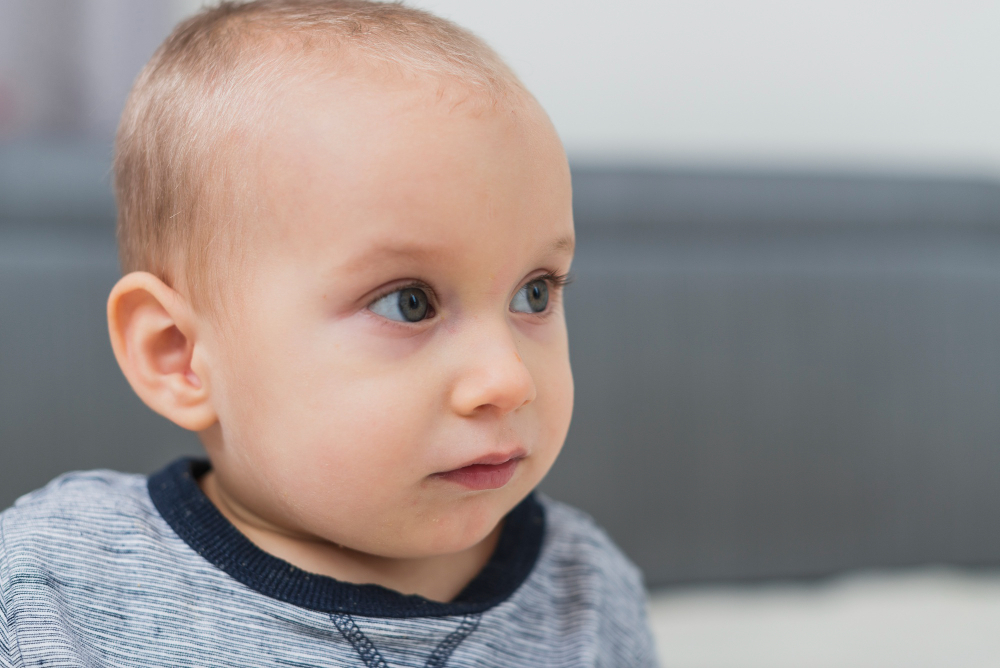
The development of eye color in babies is influenced by a combination of genetic and environmental factors. While a baby’s eye color is typically not set at birth, gradual changes occur over time as the eyes develop. Here are the key factors that contribute to the development of eye color in infants:
1. Genetics
Genes play a significant role in determining eye color. The color of a person’s eyes is primarily determined by the amount and distribution of melanin, a pigment that gives color to the iris. Different combinations of genes inherited from parents can result in a range of eye colors in babies, including blue, green, hazel, brown, or gray.
2. Amount of Melanin
The amount of melanin present in the iris impacts the intensity of eye color. Higher melanin levels result in darker eye colors, such as brown or black, while lower melanin levels contribute to lighter eye colors, such as blue or green.
3. Environmental Factors
External factors, such as light and surroundings, can also influence the appearance of eye color. Bright lights can temporarily constrict the pupil and make eye color appear lighter. Additionally, the reflection of light on objects or the environment can create the illusion of different eye colors.
4. Age and Development
Babies’ eyes often have a bluish hue at birth due to the lower levels of melanin in their irises. As they grow and develop, the production of melanin increases, leading to potential changes in eye color during infancy.
5. Variability
It’s important to note that eye color can vary among individuals and may not follow predictable patterns. Factors like genetic mutations or other unknown influences can contribute to variations in eye color changes among babies.
Debunking Common Misconceptions about Baby Eye Color Change

There are numerous myths and misconceptions regarding the fascinating phenomenon of baby eye color change. Let’s debunk some of these misconceptions to gain a clearer understanding of how eye color develops in infants.
Myth 1: Eye color is determined solely by genetics.
While genetics do play a significant role in determining eye color, it is not the sole factor. Environmental influences, such as the amount of melanin produced and the amount of light exposure, also contribute to the final hue of a baby’s eyes.
Myth 2: A baby’s eye color is set at birth.
Contrary to popular belief, a baby’s eye color isn’t always set in stone right at birth. Eye color development continues during the first year, and in some cases, changes can occur even after that period. The final color may not fully manifest until well into childhood.
Myth 3: Baby eye color can be accurately predicted.
While it’s tempting to try and predict a baby’s future eye color, it’s not an exact science. Early changes in eye color can provide some clues, but predicting the final color with certainty is not possible. Eye color inheritance is complex and can involve multiple genetic factors.
Myth 4: The brightness of the birthing room can determine eye color.
The idea that the bright lights of the birthing room can permanently influence a baby’s eye color is simply a myth. The brightness of the room has no lasting impact on eye color development. Eye color is primarily determined by genetics and melanin production.
It is crucial to distinguish between fact and fiction regarding baby eye color alteration. Familiarizing oneself with the intricacies of eye color development can help dispel popular misconceptions and enable us to recognize the exquisite and diverse variations that each infant possesses.
Predicting the Final Eye Color of Your Baby
As new parents eagerly await the arrival of their little ones, one popular question often springs to mind: “What will my baby’s eye color be?” While the exact hue of your baby’s eyes cannot be predicted with complete certainty, there are early color changes that can offer valuable insights into what their eventual eye color may be. Let’s explore some key factors and tips for predicting the final eye color of your baby.
Understanding the Basics
Eye color is determined by the amount and distribution of a pigment called melanin within the iris, the colored part of the eye. At birth, most babies have little melanin in their irises, which results in the initial appearance of blue or gray eyes. Over time, as the melanin-producing cells within the iris become more active, the eye color may change.
Genetic Influences
Genes play a significant role in eye color inheritance. The child’s other biological parent’s eye color is particularly influential. For example, if both parents have brown eyes, there is a higher likelihood that the baby will also have brown eyes. However, it’s important to note that eye color inheritance is a complex process influenced by multiple genes, and exceptions to the general patterns can occur.
Observing Early Color Changes
The first six to nine months of a baby’s life are typically when the most dramatic eye color changes occur. Pay close attention during this time, as subtle shifts in color may provide hints about the final hue. For instance, if the initial gray or blue eyes begin to turn a darker shade or show hints of green or brown, it suggests that the melanin production in the iris is increasing.
Variability and Patience
It’s important to keep in mind that the timeline for eye color development can vary widely among individuals. Some babies’ eye colors may be relatively stable by the age of one, while others may continue to change until they are two or even three years old. So, allow for some time and be patient before determining your baby’s final eye color.
Adopt the Beauty of Surprises
Predicting a baby’s eye color can be an exciting guessing game, but ultimately, it’s just that – a guess. Children are full of surprises, and their eye color can be one of them. So, while it’s fun to speculate and make predictions based on early color changes, remember to appreciate and adopt the unique and beautiful eye color that your little one ultimately develops.
The Final Note: When Is the Eye Color Set in an Infant?

To sum up, the timeline for when a baby’s eye color is set can vary. While some babies have their eye color determined at birth, for others, changes may occur during the first few months or even up to a year. The final hue of a baby’s eyes is influenced by various factors, including the amount of melanin pigment present, which is responsible for determining baby’s eye color.
It’s important to note that the appearance of the iris, or the colored part of the eye, can change as the baby grows. At birth, many babies have blue or gray eyes due to the low level of melanin pigment. Over time, melanin production can increase, leading to a darker shade of the eyes.
While genetics play a significant role in determining eye color, it’s not always possible to predict the exact outcome. Eye color inheritance can be complex, and the combination of genes from both parents can result in surprises. Additionally, environmental factors, such as the amount of light exposure, can influence melanin production and affect the eventual eye color.
In summary, the development of a baby’s eye color is a fascinating process that can bring joy and excitement to new parents. Remember, each child is unique, and their eye color may change over time. Enjoy the beauty of your baby’s eyes as they grow and clutch the mystery of what their final eye color will be.

